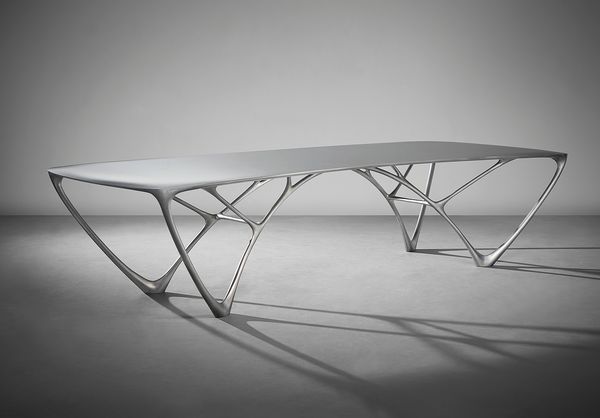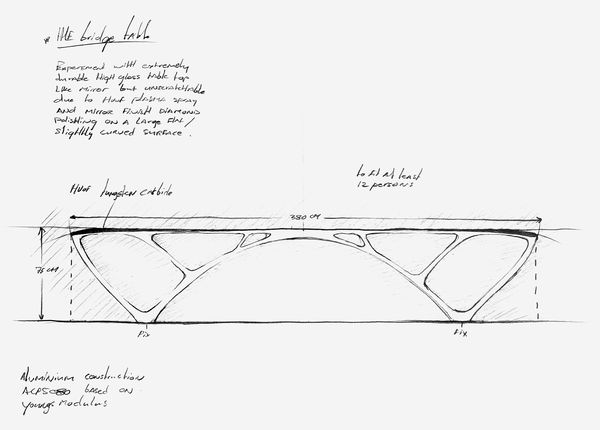Joris Laarman Important 'Bridge' table, 2010
Boundaries between disciplines are ever more blurred and distinctions less obvious. Where does design practice stop and engineering begin? Does science influence design, or design inform science?
In response, Joris Laarman has implemented an interdisciplinary structure in his studio combining technology and craft. In his studio, a meticulously selected group of code-writers, often with an architectural background, work alongside craftsman in realizing Laarman's labyrinthine designs. "The studio is like a mini-society where software engineers work together with traditional craftsmen," says Laarman, "I am very careful choosing people."
Those afraid of heavy machinery and robots need not apply. Laarman elaborates that "most of them come from the same European universities or local craft schools. This is little surprising given that the studio practice needs very specific skills and knowledge, and these schools seem to cherish and most importantly teach them."
Joris Laarman preparatory drawing of the 'Bridge' table © Joris Laarman Lab
Despite the use of industrial materials, Laarman's final objects demonstrate the fineness of the hand-crafted and hand-finished. Nothing could be a better of example of this than his Bridge Table, a product of his decade-long endeavor, "The Bone Furniture." Described by Laarman as "a series of objects that represent a world of thinking," the collection was inspired by the natural growth structures in bones. The monumental Bridge table is constructed with aluminum — a lightweight and easily malleable material that protects against corrosion. The construction of the large sculptural table was quite seamless even with its complicated design. However, it was the finish that proved to be a greater challenge for Laarman and team.
Due to the aluminum's naturally soft composition, Laarman needed to discover a technique that would protect the table from the daily wear it was sure to receive. His fascination with the technique High Velocity Oxygen Fuel (HVOF) spray coating led him to choose tungsten carbide, one of the hardest materials on earth possessing ceramic-like qualities. The table took two months of polishing day and night to get the mirrored finish of the final product. Able to be polished by only the hardest and most rigid materials, the process led to the development of a robotic arm for high-pressure polishing.
If Ikea or anyone else wants to pick up the challenge of mass producing my work, it would be a great compliment...
Laarman's fascination with technology doesn't simply lead to a celebration of the new and possible, but aims at finding forms and aesthetics with a fundamental combination of coding and crafting, of studio and workshop practice. His past collaborations include tech companies, scientific and academic institutions. With little interest in developing his designs into mass manufactured products, Laarman is open to others doing so: "If Ikea or anyone else wants to pick up the challenge of mass producing my work, it would be a great compliment, but I believe that will only happen once digital fabrication is fully implemented."
It is unpredictable what will catch Laarman's attention next.


